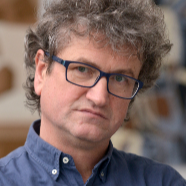Abstract
ABSTRACT The game of space was and still is a crucial aspect of visual arts. The aim of this study is to examine how the arrangement of hues, rhythms and angles of various polygons can create an impression of depth and movement on a flat surface. The so-called Penrose tiling and Ulam's spiral are mathematical models that have been applied for the painting experiment. There is a vast amount of evidence gathered over the ages that shows art is strictly interrelated with science. It refers to music, literature, architecture and the visual arts as well. Since the Renaissance, painters and architects have employed descriptive geometry, mathematics and linear perspective in order to operate with right proportions but also to create both the illusion and distortion of space. At the beginning of the twentieth century, painters released themselves from realism and gained a new approach towards the picture. Discoveries from natural science allowed them to perceive the phenomenon of light and colour as a vibration of wavelengths. When Euclidean geometry was abandoned, the non-Euclidean space-time universe and the quantum realm came on stage together with the various types of abstract art, which are still present in our postmodern era. In the mid-seventies of the last century, English mathematician and physicist Roger Penrose published a non-periodic set of patterns. These constructions have been based on the five-fold symmetry. During my painting experiment the polygons shaped by Penrose were deconstructed through additional axes of symmetry. I applied sequences of primary and secondary colours onto the new structure. This operation revealed an unexpected rhythm of shapes and colour configurations. Although a new space was opened, the original symmetry remained. A similar study was carried out with the use of Ulam's spiral, which is a graphical layout of prime numbers. In this case, the primes appear on a quadratic lattice in diagonal, vertical and horizontal rows, creating unique patterns, irregular intervals and gaps. The main finding of this artistic and theoretical study is the statement that each irregularity has its own logic and order. The non-periodical nets of shapes and colour shades reflect the complex structure of the entire universe.
Citations
-
0
CrossRef
-
0
Web of Science
-
0
Scopus
Author (1)
Cite as
Full text
full text is not available in portal
Keywords
Details
- Category:
- Conference activity
- Type:
- materiały konferencyjne indeksowane w Web of Science
- Title of issue:
- 5th International Multidiscilinary Scintific Conference on Social and Arts SGEM 2018 strony 153 - 161
- ISSN:
- 2367-5659
- Language:
- English
- Publication year:
- 2018
- Bibliographic description:
- Wróblewski K..: Rhythm and Colours of the Angles, W: 5th International Multidiscilinary Scintific Conference on Social and Arts SGEM 2018, 2018, ,.
- DOI:
- Digital Object Identifier (open in new tab) 10.5593/sgemsocialf2018/6.3/s12.019
- Verified by:
- Gdańsk University of Technology
seen 76 times


